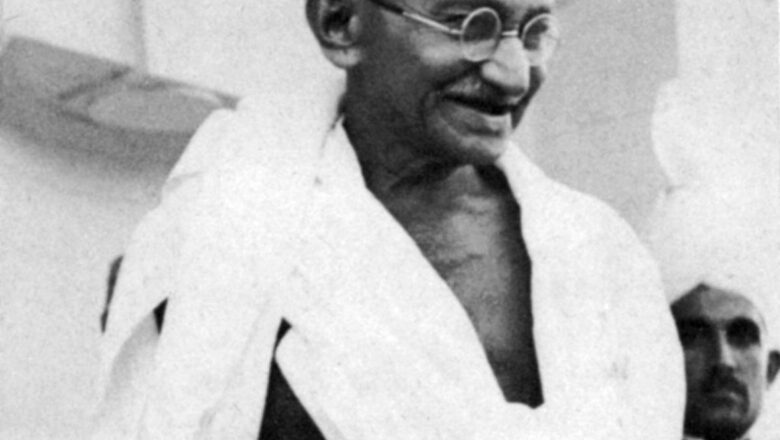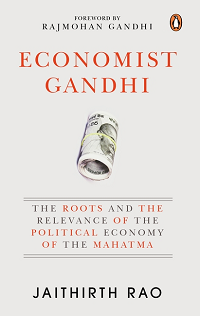
views
On his return to India, Gandhi could have chosen to settle down in Porbandar, where he was born, or in Bombay, whose citizens seemed inordinately fond of this South African returnee. His choice of Ahmedabad is quite interesting.
Porbandar would have cramped him. Firstly, it was too small and too unimportant a place for a man who had large aspirations and ambitions, such as taking on the most powerful empire in the world. But there was an even more proximate reason, given that Gandhi was primarily interested in political action. One of the amazing and inexplicable features of British rule in India was that free speech and free, even modestly incendiary, political activity had better legal protection in those parts of India directly ruled by the British than in the territories indirectly controlled by the British, where the Indian Maharajas and Nawabs were formally in charge. In Porbandar, the endlessly verbose Mahatma would have been silenced. His political activity, even of the most non-violent and anodyne kind, would simply have not been permitted by the local Maharaja even as the potentate and his courtiers operated under the stern guidance of a schoolmasterly British official.
Bombay would have been another logical choice. It was the birthplace of the Indian National Congress, the leading national political organization of the time. Bombay was a politically active place and it was quite hospitable and welcoming as far as Gandhi was concerned. But Bombay had its disadvantages. In Durban and Johannesburg, Gandhi had blossomed in an environment where Indians from different regions living in the shadow of the British Empire had managed to acquire and assert a synthesized Indian identity. From that perspective, Bombay was similar. It was a heterogeneous mosaic of different religious and linguistic groups.
For Gandhi, this was a plus. As one who had defended the composite Indian persona in South Africa, he was popular with all groups. But Bombay’s cosmopolitanism and modernity were also negatives, from Gandhi’s perspective. He was consciously seeking a renewed tryst with his roots. This was also in keeping with the advice given to him by his political guru, Gopal Krishna Gokhale, who had advised the returnee from South Africa to get to know the proverbial real India. Bombay was far from being the real India. Additionally, it could even be thought of as a Portuguese and British creation, not an authentically Indian location. Uncharitable critics would argue that in Bombay, Gandhi may have been outshone by other stalwart political leaders. There may be an element of truth in this point of view. But when one looks at the sheer quantum of political adulation and financial support that Gandhi got over the next several decades from the people of Bombay, it seems unlikely that this concern, however valid, would have deterred the intrepid putative Mahatma. In search of his roots, or perhaps to ensure his rootedness, Gandhi turned to a city in his native Gujarat north of Bombay, but still within the same province as Bombay: Ahmedabad.
Even within the constraints described above, Ahmedabad was by no means Gandhi’s only choice. Surat was definitely an option. From a historical perspective, it would have been the ultimate irony for the inveterate adversary of the British Raj in India to settle down in Surat, where, after all, the English East India Company began its operations some centuries ago and laid the foundations for the empire that was to follow. But Surat had gone downhill over time. Its port had silted because of the vagaries of the Tapi River. Its most entrepreneurial people had moved on to flourishing Bombay.
Ahmedabad, in interior Gujarat, was also of pre-British vintage; but it was quite different. Unlike Surat, which had only been a Moghul port, even if an important one, Ahmedabad had the distinction of being the capital of the earlier Gujarat sultanate. Instead of going into a downward spiral, Ahmedabad had actually witnessed a growth spurt in the nineteenth century. And churlish observers might make the point that Ahmedabad had no towering political leaders who might be competitive thorns in Gandhi’s side. In any event, Gandhi chose Ahmedabad. This choice was not without its ironies and challenges, which are worth examining.
Ahmedabad was a city trying hard to industrialize. It was in fact trying to do pretty much what Gandhi had been negative about in Hind Swaraj (Parel, HS, 2009). It was attempting to be everything other than an idyllic village. But that was only half the story. Ahmedabad had leaped on to the bandwagon of the modern textile industry and was getting studded with textile mills, which were being set up in large numbers. The Ahmedabad textile industry was the antithesis and adversary of handloom. To make matters worse, Gandhi emerged as a friend of the textile industry. Leading textile magnates like Ambalal Sarabhai and Kasturbhai Lalbhai were Gandhi’s supporters in multiple contexts. Their financial backing of Gandhi and his activities were of considerable significance.
Gandhi was also intimately connected with the mill workers of Ahmedabad. He even led a workers’ strike against the magnates, such contradictory friendships and associations being par for the course for the enigmatic Mahatma. How, then, was Gandhi going to support handloom and oppose mills, if that would result in alienating investors and workers who depended on modern textile mills? Perhaps here lies the realpolitik answer to Gandhi’s loud and vociferous advocacy of spinning and his more muted support for weaving.
I would argue that this realpolitik explanation fails to take into account Gandhi’s crucial insight in the field of human capital development. In our analysis of Gandhi’s engagement with identity economics, we have examined the Mahatma’s approach to caste, as brilliantly explored by Nishikant Kolge (Kolge, 2017). It was important for Gandhi to attempt to redirect the identities of Indians away from disdain for manual labour, which was an activity reserved not for upper-caste persons, but for members of the lower castes. Spinning was an admirable answer. It quite ably addressed Gandhi’s concern for introducing manual labour to Indians as a dignified and worthwhile pursuit.

Read all the Latest News , Breaking News and IPL 2022 Live Updates here.




















Comments
0 comment